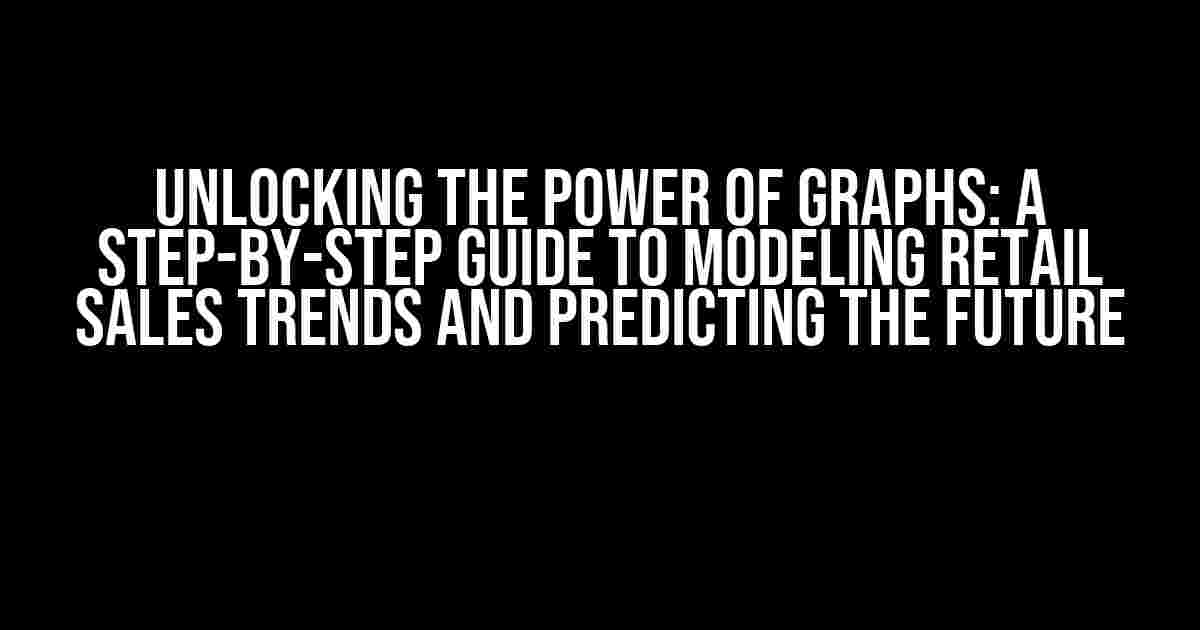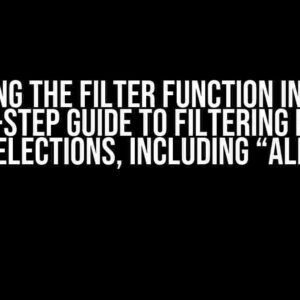Are you tired of relying on gut feelings to predict retail sales trends? Do you want to make data-driven decisions that drive your business forward? Look no further! In this comprehensive guide, we’ll take you by the hand and show you how to create a graph to model retail sales trends and extrapolate future predictions. Buckle up, and let’s dive in!
Understanding the Problem: Why Retail Sales Trend Analysis Matters
Retail sales trend analysis is crucial for businesses to stay competitive in today’s fast-paced market. By analyzing past sales data, you can identify patterns, trends, and seasonality, which can help you:
- Optimize inventory management and prevent stockouts
- Develop targeted marketing campaigns to drive sales
- Improve supply chain logistics and reduce costs
- Make informed decisions about resource allocation and budgeting
But, without the right tools and techniques, retail sales trend analysis can be overwhelming. That’s where graphing comes in – a powerful visual tool to help you make sense of your sales data.
Step 1: Collect and Prepare Your Data
Before you start graphing, you need to collect and prepare your retail sales data. This includes:
- Gathering historical sales data from your database or CRM system
- Cleaning and formatting the data to ensure consistency and accuracy
- Removing any outliers or anomalies that could skew your analysis
- Aggregating the data by month, quarter, or year, depending on your analysis goals
For this example, let’s assume you have a dataset with monthly sales data for the past 5 years. Your data should look something like this:
+------+-------+ | Month | Sales | +------+-------+ | Jan-19| 10000 | | Feb-19| 12000 | | Mar-19| 11000 | | ... | ... | | Dec-23| 25000 | +------+-------+
Step 2: Choose the Right Graph Type
Now that you have your data, it’s time to choose the right graph type to model your retail sales trend. For this purpose, we recommend using a:
- Line Graph: to show the trend over time
- Scatter Plot: to identify patterns and correlations
A line graph is ideal for visualizing trends over time, while a scatter plot can help you identify correlations between variables. For this example, we’ll focus on creating a line graph.
Step 3: Create Your Graph
Using a graphing tool of your choice (e.g., Excel, Python, R, or Tableau), create a line graph with:
- x-axis: Time (Month or Year)
- y-axis: Sales
- Data points: Each month’s sales data
Here’s an example of what your graph might look like:

Step 4: Analyze and Interpret Your Graph
Now that you have your graph, it’s time to analyze and interpret the results. Look for:
- Trends: Is the trend increasing, decreasing, or stable?
- Seasonality: Are there any seasonal patterns or fluctuations?
- Anomalies: Are there any outliers or unusual data points?
Based on your analysis, you can start to identify patterns and make informed decisions about your retail sales strategy.
Step 5: Extrapolate and Predict Future Trends
To predict future retail sales trends, you can use various techniques, such as:
- Linear Regression: predicts a straight line trend
- Exponential Smoothing: predicts a trend with gradual changes
- Autoregressive Integrated Moving Average (ARIMA): predicts a trend with seasonal and non-seasonal components
For this example, let’s use linear regression to predict future sales trends. Using your graphing tool, add a trend line to your graph:
y = mx + b
Where:
- y: Predicted sales
- m: Slope of the trend line
- x: Time (Month or Year)
- b: Intercept of the trend line
Using the trend line equation, you can predict future sales values for the next few years:
| Year | Predicted Sales |
|---|---|
| 2024 | 27000 |
| 2025 | 30000 |
| 2026 | 33000 |
Now you have a clear picture of your retail sales trends and a prediction of future sales values. This information can help you make informed decisions about inventory management, marketing strategies, and resource allocation.
Conclusion
In this comprehensive guide, we’ve shown you how to create a graph to model retail sales trends and extrapolate future predictions. By following these steps, you can unlock the power of data analysis and make informed decisions to drive your business forward.
Remember, graphing is just the first step in retail sales trend analysis. Continuously monitor and update your analysis to ensure you stay ahead of the curve and make data-driven decisions.
Happy graphing, and may your retail sales soar!
Here are 5 Questions and Answers about “How do I make a graph to model the trend of retail sales, and also extrapolate/predict the trend for future years?”
Frequently Asked Question
Get ready to visualize and forecast your retail sales like a pro!
What kind of graph should I use to model the trend of retail sales?
A line graph or a scatter plot is perfect for modeling the trend of retail sales. You can plot the sales data over time, with the x-axis representing the time period and the y-axis representing the sales amount. This will help you visualize the trend and identify any patterns or seasonality in the data.
How do I prepare my data for graphing and forecasting?
Make sure your data is clean and organized! Collect your historical sales data, and ensure it’s in a format that’s easy to work with, such as a CSV or Excel file. Remove any missing or inconsistent data points, and consider normalizing or transforming your data to make it easier to analyze.
What statistical methods can I use to extrapolate and predict future sales trends?
You can use various statistical methods, such as linear regression, exponential smoothing, or ARIMA models, to extrapolate and predict future sales trends. These methods can help you identify patterns in your data and make informed predictions about future sales.
How can I account for seasonality and trends in my sales data?
Use techniques like seasonal decomposition or Fourier analysis to identify and account for seasonality in your sales data. You can also use methods like trend analysis or moving averages to identify and extract trends from your data. These techniques will help you create a more accurate forecast of future sales.
What tools or software can I use to create a graph and predict future sales trends?
You can use a variety of tools and software, such as Microsoft Excel, Tableau, Power BI, or Python libraries like Pandas and Matplotlib, to create a graph and predict future sales trends. These tools offer built-in functions and algorithms for data analysis, visualization, and forecasting.


